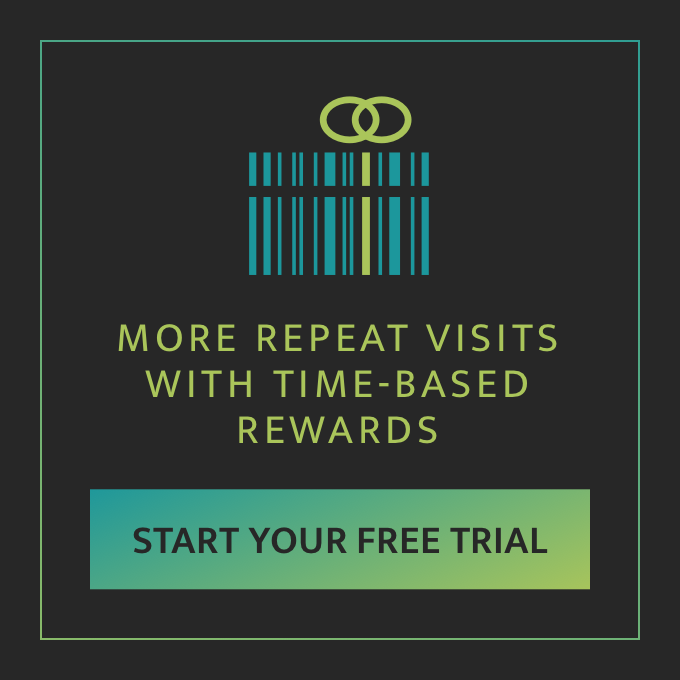The Origin of RewardMore from Struggle to Triumph

Unlike many tech startups that originated from an idea, RewardMore was born from necessity, the mother of all invention. I had a brick and mortar business that was struggling. We could bring in new clients, but the cost was so expensive that if we didn’t find a way to get them back, we were going to have to shut down.

I opened a float spa in 2006 in the heart of San Francisco. It may not seem that long ago, but it was before social media, which has changed everything about business. Print advertising was expensive and didn’t work very well so I turned to guerrilla marketing and took to the streets leaving hangers on every door I could find. Being San Francisco, you can imagine the number of stairs I had to climb. It was a grind, to say the least.
My Focus on Customer Retention
I offered memberships and packages to try to get our clients to come back, which worked for some, but many just didn’t want to pay money up front. This was especially true for daily dealers who came in at half off. They expected to get half off every visit, which I discovered was the norm, according to the psychology of pricing. We needed a retention program for the clients who didn’t want to prepay, and for us, this was most of them.
I turned my attention to loyalty and reward programs. They seemed to be the only marketing program that would help us retain our clients who weren’t willing to pay in advance. I was skeptical because, as a customer myself, I did not like the concept of saving points. I felt like I earned my reward when I bought something, I didn’t understand why I had to earn it twice by saving up points too. Furthermore, these programs always seemed gimmicky. The companies that offered them were really just tracking my purchases for their own needs, and the rewards I finally did earn were insulting. I rarely felt rewarded for my loyalty.
Eventually, I did sign up with a popular loyalty company to give it my due diligence, and am glad I did. Not because it was successful, as it wasn’t. It did, however, help me to see what was wrong with the concept.
The Issue With Existing Loyalty Reward Programs
This is what I found. Points work fine for low cost items people use regularly, like coffee & donuts, but did not work for my business, a service-based business, because rewards took too long to earn. We charged $75 for floats and the average repeat visit was about 7 weeks. This meant if we gave a free float for every 5 floats a client purchased, it would take more than 6 months to earn their reward. If, during that time, our competitor ran a daily deal, our clients would opt for the immediate discount. I then decided I needed to figure out a more effective way.
I mentioned I opened a float spa. One really cool thing about floating is, in the absence of gravity, sight, sound, and temperature, one has tremendous ability to problem solve. The float environment increases creativity dramatically, so I put myself in a tank, floating in the darkness for hours to find a solution.
It came to me when I started thinking about the nature of my business. I realized that services didn’t cost very much when they were used, but it cost us everything when they weren’t. The unused time on our scheduler was lost revenues so filling it up was a priority. That was when I discovered the time-based approach to rewards.
How I Changed Customer Retention Forever
I could simply give a discount when they came in by the time I wanted, which was 30 days. If they came by that time, they leveled up and earned a discount. If they missed that time, they leveled down to a smaller discount. We then sent them reminders of the date and discount and provided a link for easy booking.
This approach did so much more than the points system could. It allowed us to give a reward with each visit, and also it compelled our clients to come in sooner, which was great for filling up our scheduler. They were happier, I was happier, and my business was healthier.
I ran this program for a couple years and was really impressed by how well it worked. The average return visit dropped from 7 weeks to 5 weeks. The scheduler filled up and our revenues increased. We even had to raise our rates to create more space.
I then shared it with a couple other float spas and their feedback was encouraging. All of them liked the program and said it was helping them get more repeat visits. At this time, I was also consulting with new float spa owners, helping them open. One of my associates, and now partner, Tabitha, better known as Tabbs, heard me talk about the time-based reward program and its success and urged me to start a company. RewardMore was born.
RewardMore exists because the service industry needs a time-based approach to rewards that reflects the time urgent nature of our businesses. We hope we can help you achieve your dreams.





0 Comments